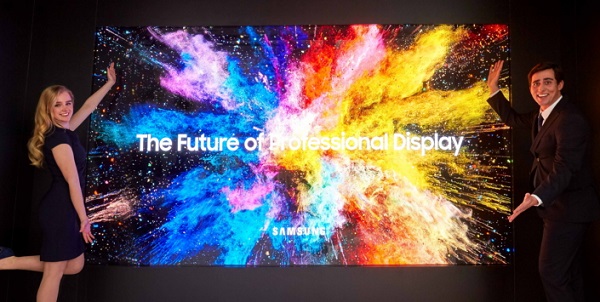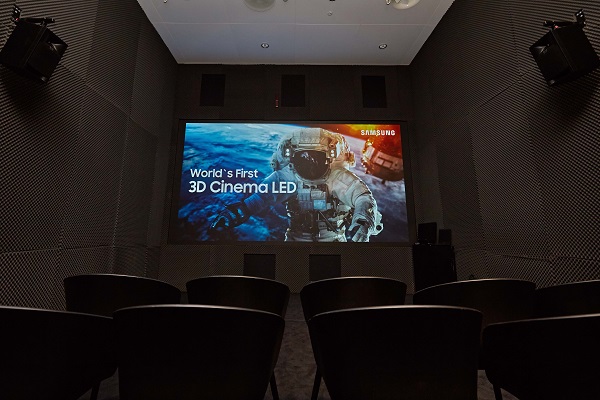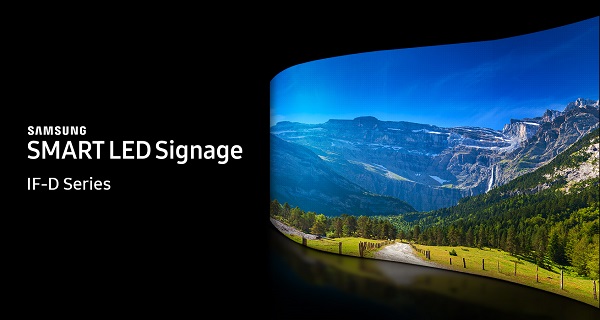Samsung Electronics literally will take LED engagement to new heights with the introduction of ‘The Wall Professional’ – a modular, large-format indoor Micro LED display that can extend to hundreds of inches in size while delivering outstanding brightness, contrast and viewing angles. The Wall Professional will serve as the centerpiece of the Samsung booth at ISE 2018.
Samsung also introduces a host of cutting-edge technologies including 3D Cinema LED that empowers cinemas to deliver fresh, compelling and memorable movie contents to vital movie-goers.
“By upgrading to powerful LED displays that blend into all professional environments without space or size restrictions, businesses can deliver a next-level content experience that captivates audiences and ultimately translates to significant growth,” said Seog-gi Kim, Executive Vice President of Visual Display Business at Samsung Electronics. “The Wall Professional is just one component of our broad ISE 2018 lineup that offers futuristic solutions to emerging operational challenges, and we look forward to sharing our vision for what’s next with our customers, partners and peers at this one-of-a-kind pro AV and electronics forum.”
The Wall Professional: Micro LED Display Fully Configurable in Size
A business-ready variation of one of CES 2018’s most talked-about consumer displays, The Wall Professional’s modular design allows for customized configurations beyond or below its 146-inch size standard. Users can add or remove unlimited LED screens to and from The Wall Professional without impacting performance or presentation quality. The display’s self-emitting Micro LED pixel modules produce brilliant imagery free of color filters or backlighting and envelop viewers through elevated peak brightness (up to 1,600nit) and a near infinite contrast ratio.
 |
|
(Image: Samsung) |
The Wall Professional builds upon its consumer counterpart with the integration of Samsung’s MagicInfo content management platform. Within MagicInfo, users can create, schedule and deploy content across a single Wall Professional display or Wall Professional display network from any location. The platform also provides complete display performance visibility for immediate error detection and troubleshooting.
3D Cinema LED: A Star-Studded Sequel
ISE 2018 attendees will be the first to see the next evolution of Samsung’s pioneering cinema display technology with the debut of the world’s first 3D Cinema LED screen. This enhanced display maintains consistent brightness to deliver subtitle text, images and even minor visual details with unprecedented accuracy, even while viewers wear 3D glasses. Unlike standard 3D cinemas with more limited visual reach, the Samsung 3D Cinema LED screen delivers these quality-enhancing benefits throughout the entire theater, ensuring that all movie-goers enjoy the same immersive viewing experience.
 |
|
(Image: Samsung) |
This 3D film accommodation marks a significant advancement upon the initial Samsung Cinema LED screen model. First introduced in March 2017, Samsung’s High Dynamic Range (HDR) Cinema LED Screen surpasses the capabilities of legacy screen-and-projector operations to deliver superior visual quality, technical performance and reliability for theaters and their guests.
IF-D Series LED Signage: A Creative and Clear Content Center
Samsung’s fine pixel-pitch IF-D Series LED Signage invites booth visitors to explore new opportunities to deliver stunning and inspiring content within customizable, easy-to-manage formats. The IF-D Series displays align Samsung’s market-best video processing tools with HDR picture refinement to produce visuals that shine even against white or dark backgrounds. This combination elevates peak brightness levels (2,400nit) and initiates scene-by-scene gradation and optimization through Scene Adaptive HDR technology.
 |
|
(Image: Samsung) |
For additional eye-catching impact, businesses can configure the IF-D Series LED displays in a range of traditional and unconventional formats. The IF-D Series’ design flexibility includes curved compositions, with concave and convex implementations.














